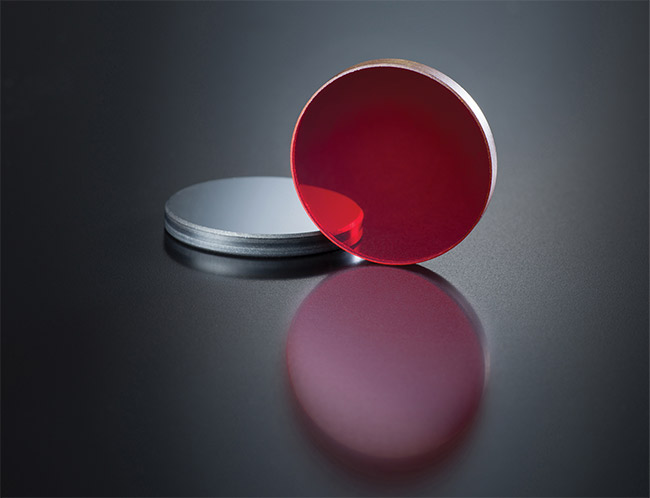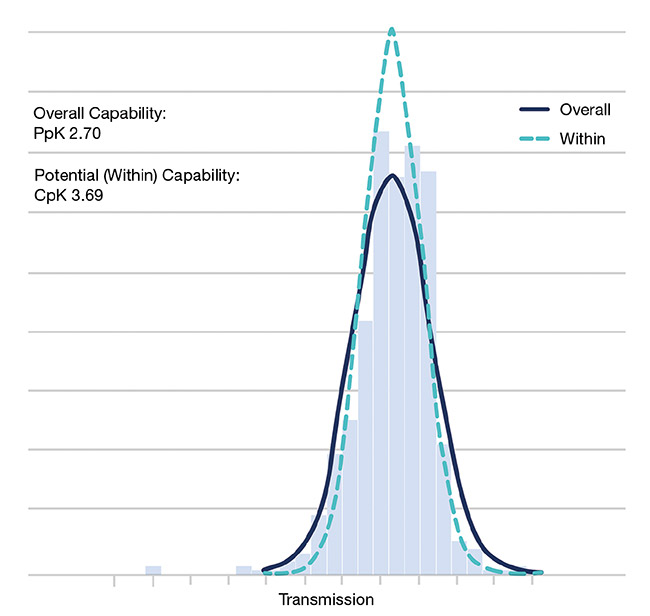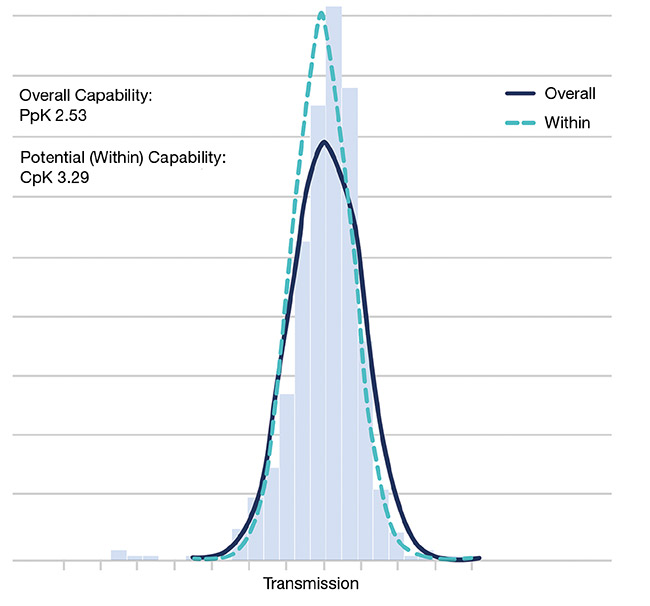New and expanding data sets are underscoring the maturity of manufacturing processes for these versatile glasses, showing that they are ready for more widespread application.
GERNOT WEBER AND JAMES MARRO, SCHOTT NORTH AMERICA
Chalcogenide glasses — more commonly known as chalcogenides — have been around for some time and offer several benefits over other IR optical materials. They are comparatively lightweight, offer excellent thermal properties, and can be precisely engineered for easy integration with other IR materials. But they have traditionally posed problems for small manufacturers who sought to document consistent production processes for these glasses. In the last ten years, this situation has drastically changed as larger companies have entered the IR glass market and geopolitical circumstances have affected the germanium supply. Today, it’s possible to obtain solid production data, such as refractive index and transmission at specific wavelength ranges. The availability of this data demonstrates the maturity of these glasses and shows that they can be produced with consistent properties, with little to no germanium, for years to come.

Chalcogenide IR glass. Courtesy of SCHOTT North America.
Once considered exotic, chalcogenide IR glasses are now better poised to fulfill the requirements of a broad spectrum of IR applications. With years of data documenting that manufacturing processes can produce consistent quality, IR system designers can rest assured that this material is ready for use in next-generation systems.
What is chalcogenide glass?
Chalcogenide materials combine chalcogen group elements, such as selenium or sulfur, with semimetals such as germanium, antimony, or arsenic. The silicon found in most glasses has poor IR transmission. Replacing silicon with chalcogenides produces an optical material with high transmission at IR wavelengths.
Optical components made of chalcogenides enable clear and crisp images due to their excellent transmission in the short-, mid-, and long-wave IR ranges. They also exhibit low dispersion that can help create color-correcting optical systems without worrying about thermal effects. Varying the amount and ratio of chalcogen and semimetals can impart various material properties for meeting the needs of a variety of IR applications.
Chalcogenide glasses are amorphous materials that are created using a vacuum melting process. This means that they can be molded, a process that lends itself to more cost-effective mass manufacturing. They can also be processed like any other IR material through grinding, polishing, and diamond turning.
SCHOTT’s IRG family of chalcogenide glasses, for example, has excellent transmission over the IR bands of 3 to 5 µm and 8 to 12 µm; certain variants can transmit as low as 0.7 µm. Because of the material’s lower density, it weighs less than other common IR materials, such as germanium. The glasses are also optimized for pairing within the family of IR glasses and with other IR materials to create cost-effective and high-performance optical designs.
Well-defined thermal properties
Currently, with the growing demand for uncooled IR detectors, it is critical to use materials with well-defined thermal properties. One such property is the temperature coefficient of refractive index (dn/dT), which describes the degree to which the refractive index changes in response to temperature change. A low dn/dT allows designers more latitude. Systems incorporating materials with a high dn/dT require complex compensating processes to avoid image degradation during temperature swings. While lenses made from IR optical materials — such as germanium and silicon — have a particularly poor dn/dT, chalcogenides offer superior performance on this front.
The coefficient of thermal expansion (CTE) is another key thermal property of materials. It describes the degree of expansion or contraction that a material exhibits in response to temperature changes. It is helpful for IR glasses to have a CTE matching that of aluminum, so that it is easier to mount a lens in an aluminum ring, for example. Germanium’s CTE of 5.8 × 10−6/K is not well matched with aluminum (23.1 × 10−6/K), whereas chalcogenide glasses, such as SCHOTT’s IRG 26, have a CTE of 21.4 × 10−6/K.
Traditionally, crystalline IR materials, such as zinc sulfide and zinc selenide, did not work well for color-corrected systems because their dispersive properties cause light at different wavelengths to interact with the material differently. However, the low dn/dT and low dispersion properties of chalcogenide glasses make them ideal for color-corrected systems.
Manufacturing process maturity
For some time, the limited number of optics applications that required transmission at IR wavelengths kept demand low for chalcogenides, making it difficult for suppliers to provide detailed technical descriptions of the glasses or to show reproducible results in real-world applications. This situation created a self-fulfilling prophecy where low demand led to low availability, and optical designers and product developers were reluctant to experiment or explore chalcogenides as a material solution for new products. However, the status quo has changed recently as potential new applications for IR optics have emerged, fueling increased interest in chalcogenide glasses.
More reliable product data will lend further fuel to this trend. According to Kathleen Richardson, Pegasus professor of optics and materials science and engineering at the University of Central Florida, it is essential for the IR optical design community to have a reliable database that precisely quantifies optical and thermal data of chalcogenides over these materials’ key spectral regions and thermal conditions of use. This will encourage broader integration of chalcogenides into future system designs alongside conventional crystalline media.
When assessing the maturity of a manufacturing process, the process performance (Ppk) and process capability (Cpk) values are often used. Both values provide a way to verify whether the process can consistently meet customer requirements. The main difference between the two is that Ppk values indicate how a process has performed in the past, using the overall data. Cpk values, meanwhile, measure consistency compared to a processes’ average performance to provide an indication of the potential capability (Figures 1-3).



The graphs in Figures 1 and 2 (top and middle) compare the overall capability of IRG 26 (As40Se60) chalcogenide glass with its process performance (Ppk) and process capability (Cpk) values in the context of the material’s transmission at 4 µm and 10 µm. The data was collected from more than 100 samples. Figure 3 shows similar data for IRG 26 glass with a refractive index of 10 µm (bottom). Courtesy of SCHOTT North America.
Figures 1-3 clearly show that the production processes for the material are very stable and help to ensure these chalcogenide glasses perform well above the industry norm of 1.33, using either measurement. That means glass purchased today will have the same properties as the same glass ordered 10 years from now.
Ppk and Cpk values can also help to determine the manufacturing readiness level (MRL), a scale developed by the industry to assess the maturity of a manufacturing process. The scale ranges from 1 to 10, with 10 being the highest level of production readiness. After years of carefully monitoring, documenting, and optimizing the glass manufacturing processes, SCHOTT’s line of chalcogenides has shown stable production quality for more than five years, giving them an MRL of 8 to 10. This is an important consideration for designers looking to incorporate chalcogenides into new products because it means that they can expect consistent glass properties for years to come.
Thermal imaging
Though chalcogenide glasses offer options for short-wave IR and mid-wave IR imaging systems, these systems carry the added expense of cooling systems and processors. Most designers instead focus on long-wave IR systems that operate in the 8- to 14-µm region of the IR spectrum. Fortunately, long-wave IR applications lend themselves well to optical designs that are less complex and materials that can be manufactured in large quantities.
Today, chalcogenide glasses are helping to enable more cost-effective, high-performance long-wave IR imaging applications, such as military night vision and targeting systems that provide critical situational awareness in low light (Figure 4). The technology can also be incorporated into personal vision devices or security cameras for applications such as border control, law enforcement, automotive, and defense. In addition, thermal imaging devices help emergency services personnel see who they need to find and assist.

Night vision system that uses IR glass. Courtesy of SCHOTT North America.
Chalcogenides can be made into optical components in large or small volumes. As optical and thermal data for these materials continues to grow, quality assurance procedures will increasingly help ensure that each batch reliably meets stringent standards. Further, research into chalcogenides is helping to develop new processes that minimize the formation of stria or inhomogeneities that can degrade optical performance. Additionally, state-of-the-art imaging technology is now able to catch inclusions and test each batch of glass against technical standards to assure quality.
Today’s product developers are looking for IR materials with mature and stable manufacturing processes and advanced IR properties. Chalcogenide glasses increasingly meet all these requirements and are ready to help enable innovative solutions in optical systems to serve the rapidly growing segment of IR technology.
Meet the authors
Gernot Weber is global product manager for IR materials and active laser glass at SCHOTT North America where he is responsible for global business development in commercial and defense, and the associated areas of sales, marketing, production, and R&D; email: [email protected].
James Marro, Ph.D., is an R&D scientist at SCHOTT North America. His research has focused on oxide and non-oxide glass development for applications, including solid-state batteries, optics, and electronics. He is also heavily involved in improving glass quality, processing, and characterization of IR optical materials; email: [email protected].